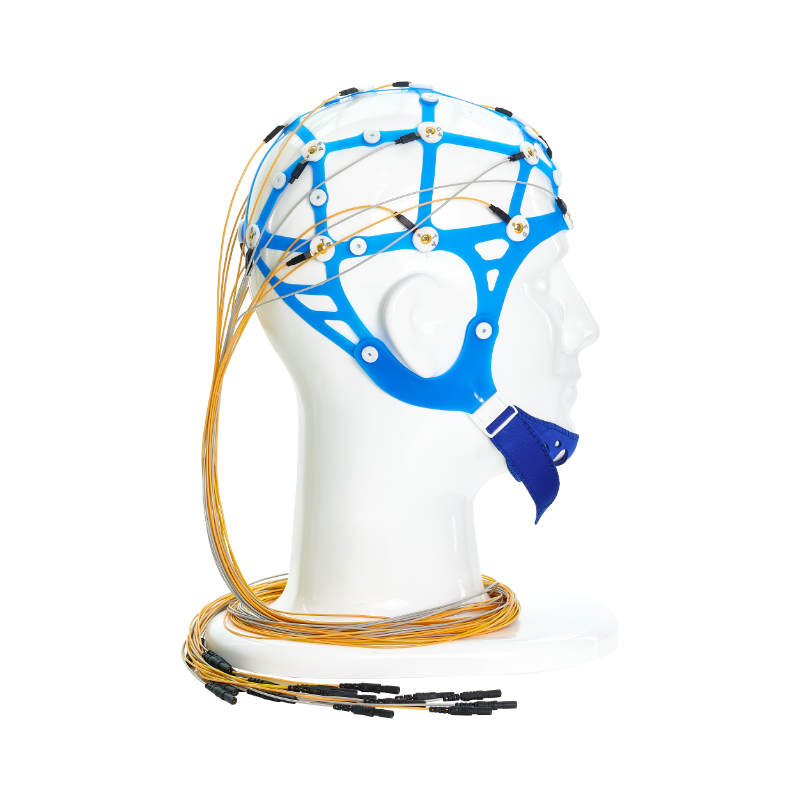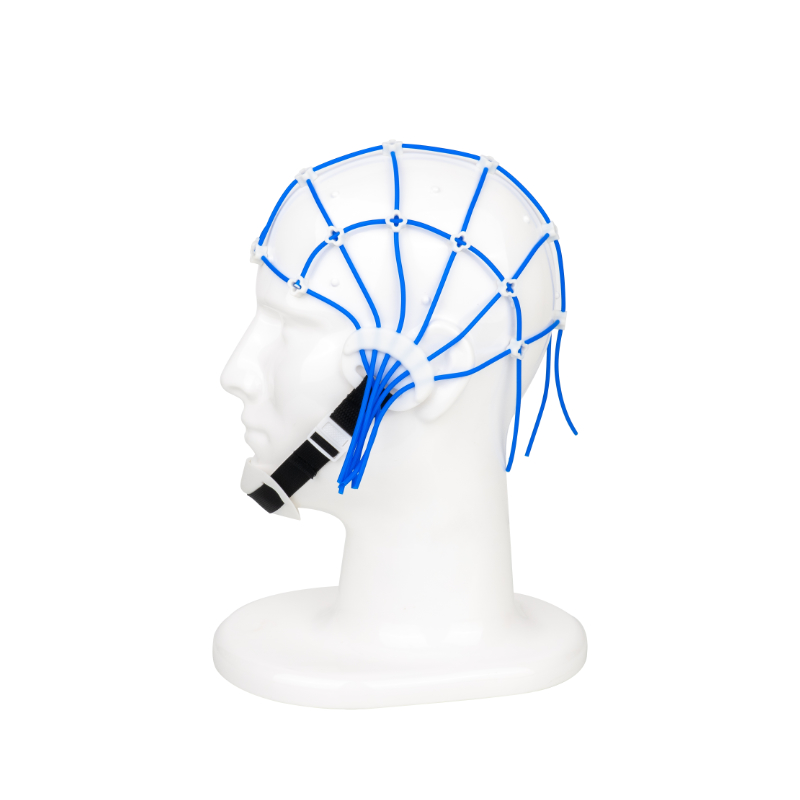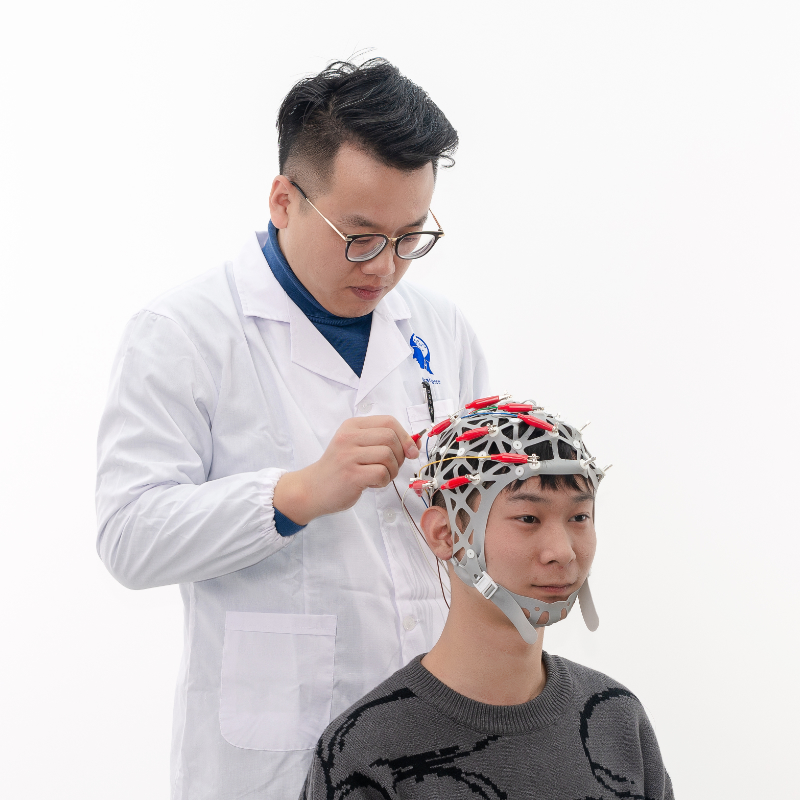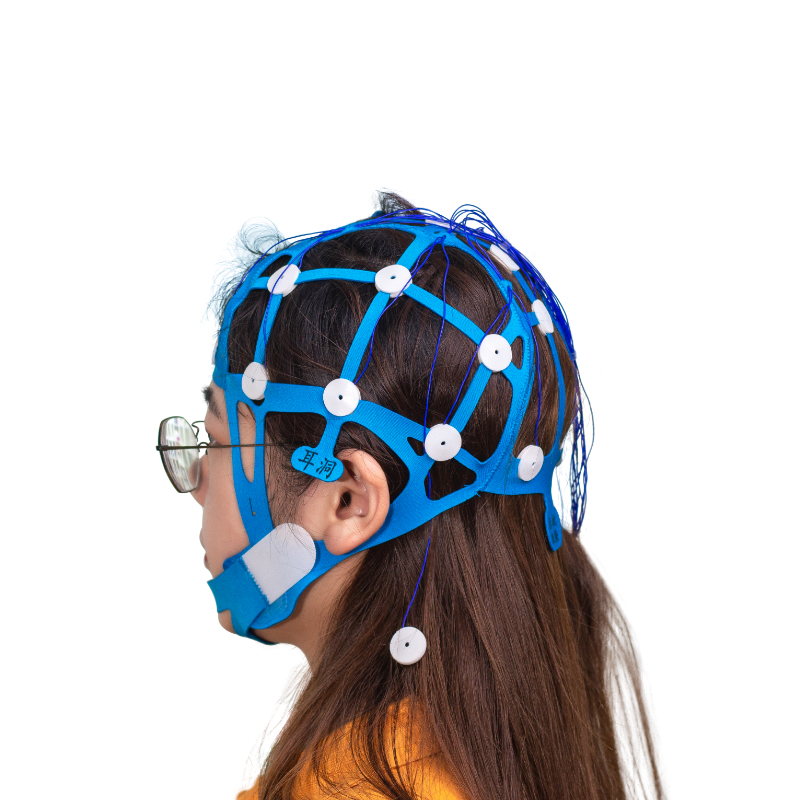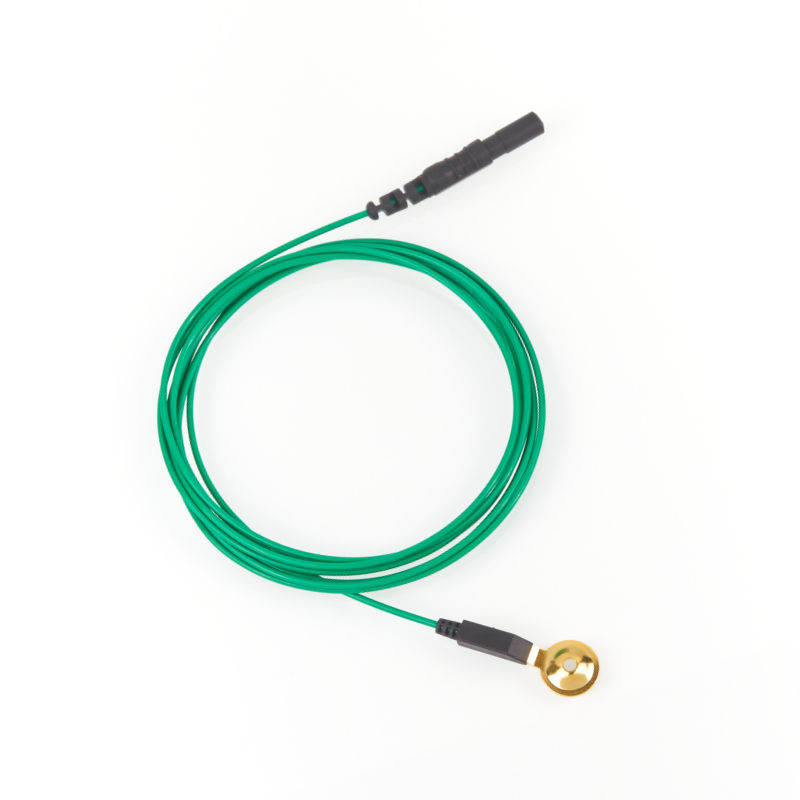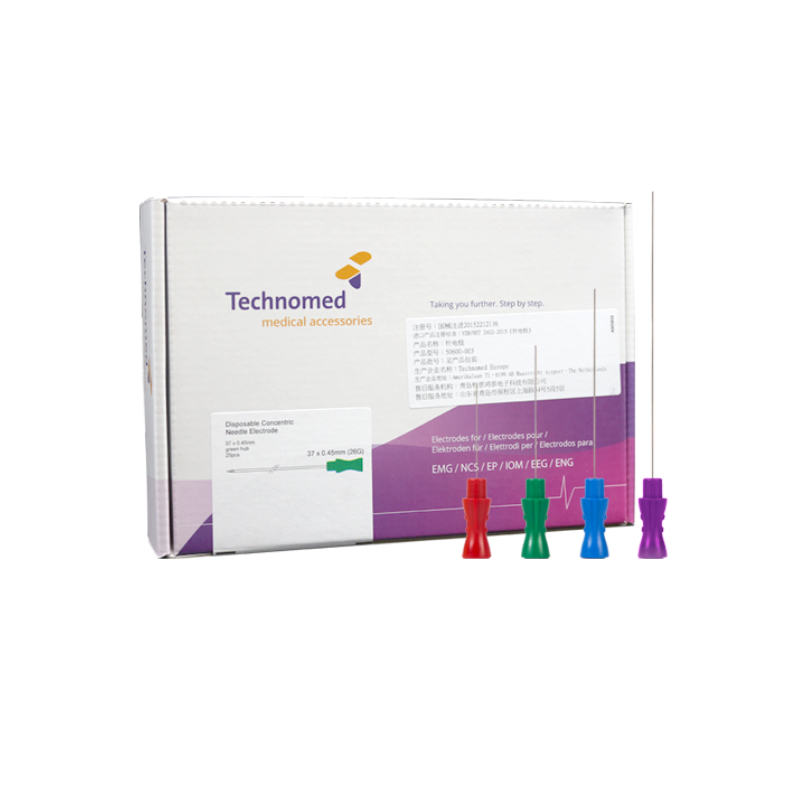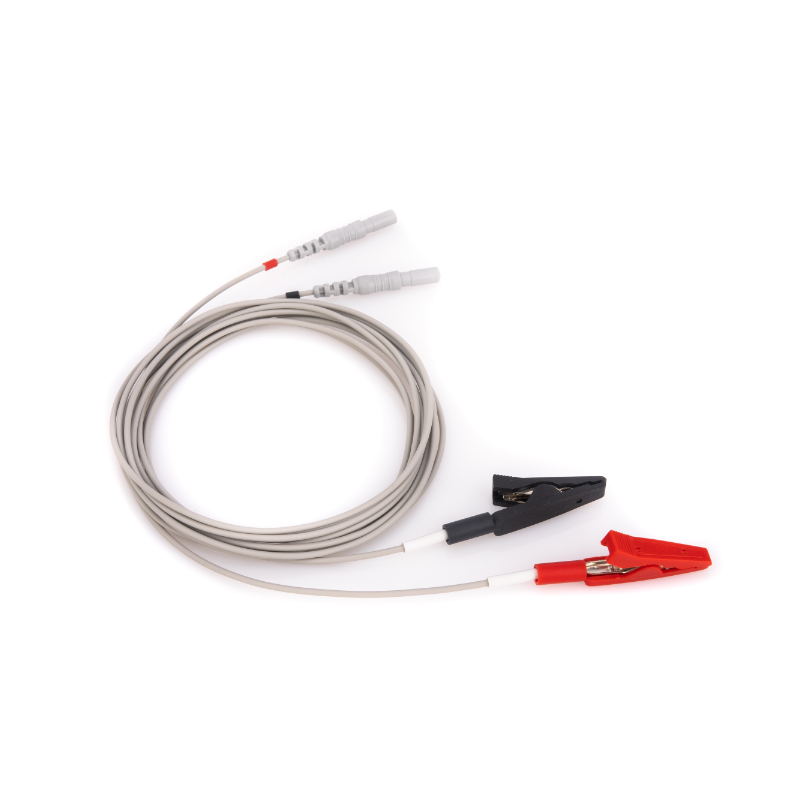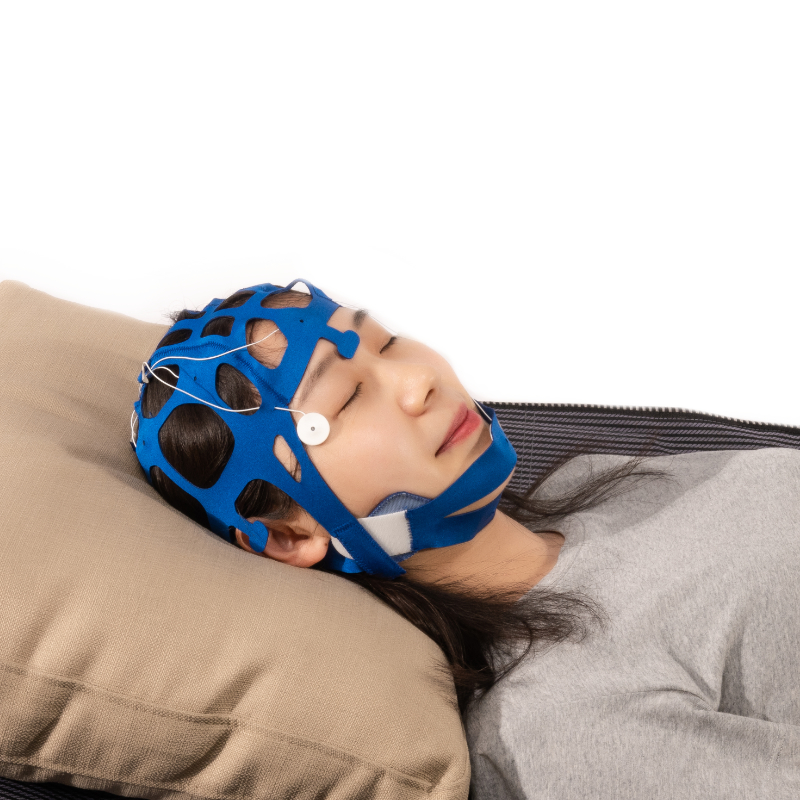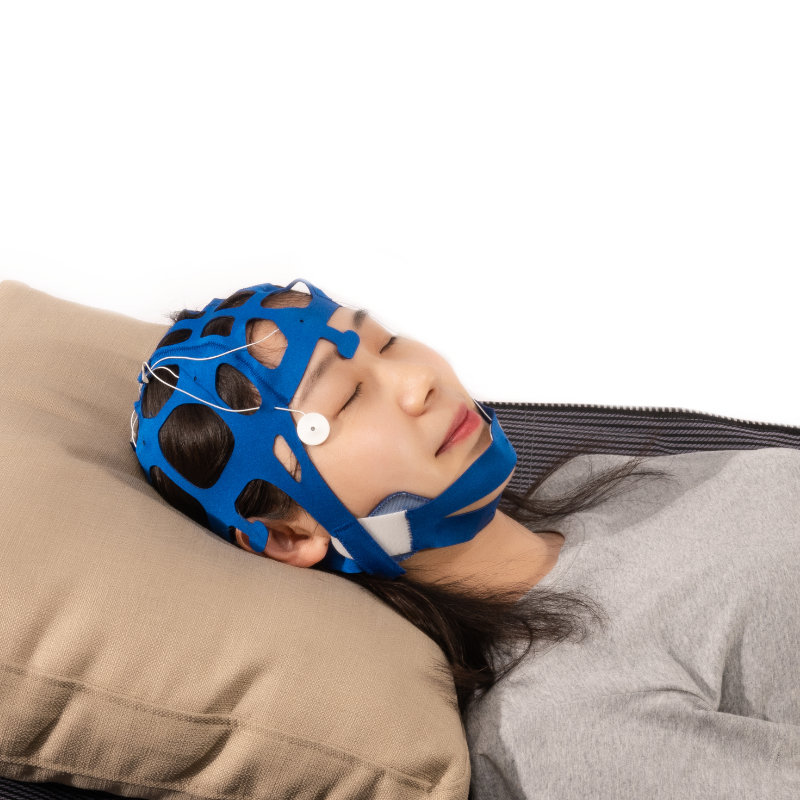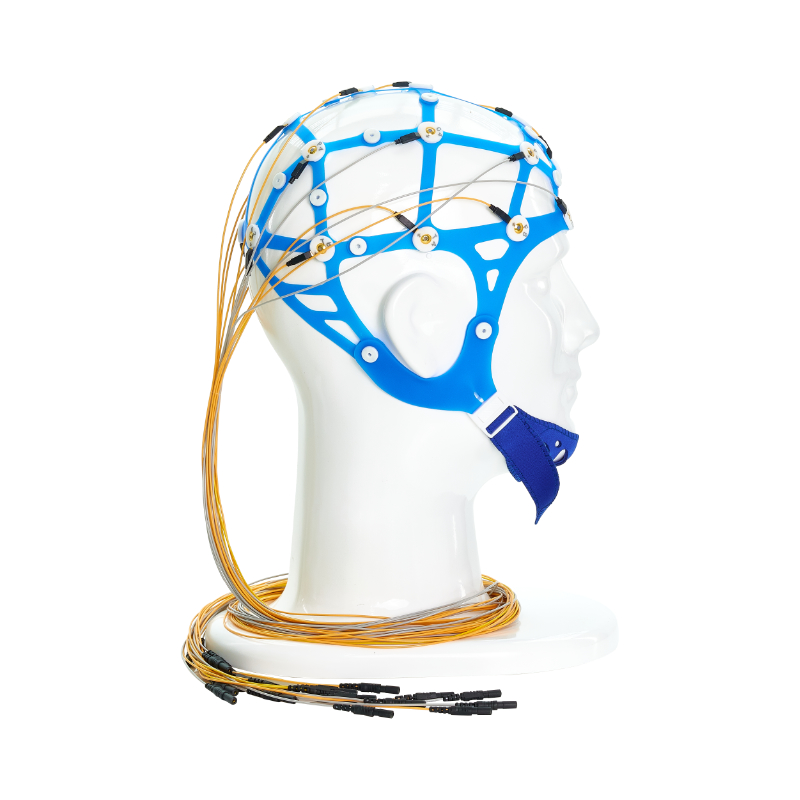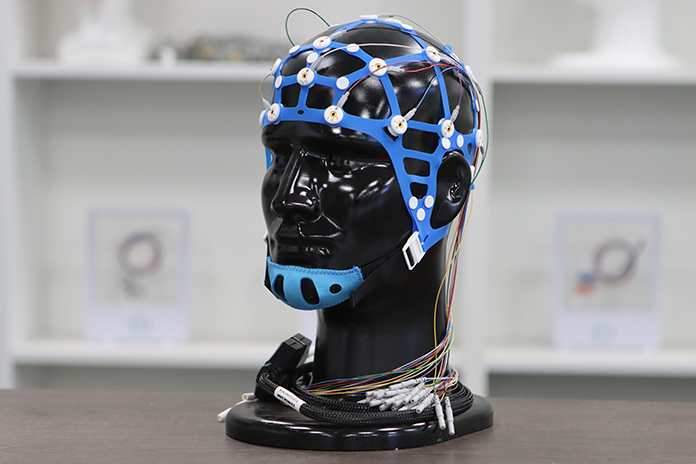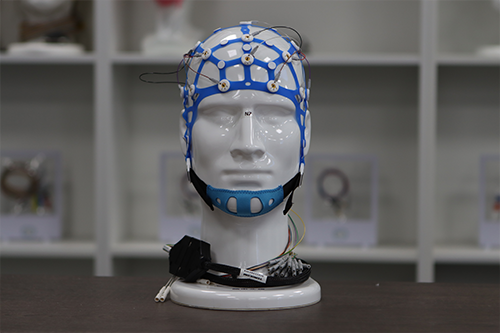*Elastic cap is an innovation of TENOCOM. The EEG cap helps you to reduce 20 EEG electrodes set-up time from 45 minutes to 5 minutes very easily.
*The design of the cap is based on Ergonomics and Computer 3D aided modeling technology. The cap is comfortable for patients to wear, for the design is based on head features.
*It suits for people of all age.
*The raw material of the cap is medical grade elastic silicone which can reduce
the pressure pain. It suits for long-term monitoring, especially for ICU service. *It is used for EEG and PSG study.
*It is unnecessary to measure the electrode position, for the cap is based on 10-5, 10-10 and 10-20 international position system.
*Each model corresponds to a color, easy to distinguish, more friendly.
Systerm 10-20
Electrode positions
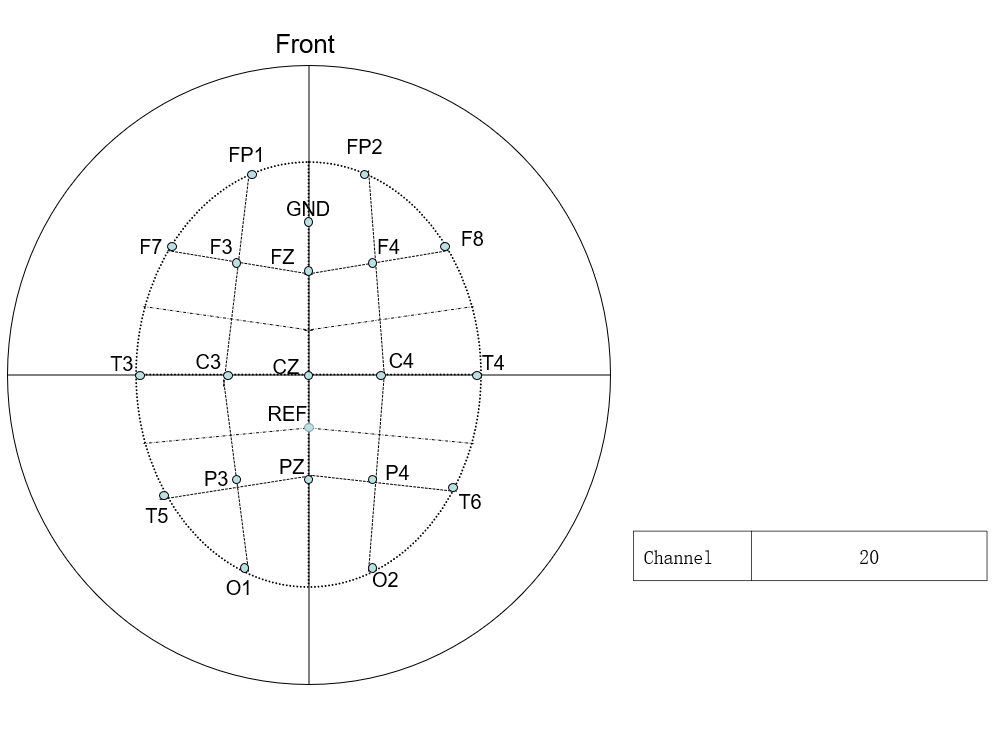
It is divided into 6 sizes according to the head circumference:

Elastic Caps
【 Main structure】
Its shape can fix the wound dressing or restrict the movement of the limbs through the form of tying, so as to play an indirect auxiliary role on the wound. Some are elastic or self-adhesive. Non-sterile provision, no direct contact with the wound, the sticking part is intact skin.
【 Product performance】
1. The deviation of the head circumference of the product should be within ±2.0 cm;
2. The placement position of the electrode sleeve adopts the 10-20 electrode placement method, and the deviation of the electrode position is less than 0.2cm.
【 Application】
Used to provide binding force on wound dressings or limbs for bandaging and fixing.
【 Contraindications】
Who have undergone surgical operations on the head and face but have not healed are prohibited from using this product.
【 Attention and Warning】
Before use, according to the head circumference select the appropriate model of elastic cap to ensure that it is in contact with the scalp. If the product model does not match, it will affect the EEG examination.
【 Instructions】 Elastic Cap
1. Install the electrode wire on the cap.Put the elastic cap on the patient's head.
2.Clean the scalp with a cotton swab dipped in gel, and fill each cup electrode with conductive paste with a hair dispenser.
3. Connect the electrodes to the EEG amplifier;
4.Start to record and print the test results;
5.After the recording is completed, remove the elastic cap.Clean the elastic cap and electrode with water, dry in the shade for ready use;
【 Product transportation】
The product should be protected from squeezing, rainwater, and high temperature heat during transportation.
【 Product maintenance】
The product is cleaned regularly with water. Dry in the shade in a ventilated place. Avoid squeezing.
【 Storage】
Store in a temperature of -10℃~+40℃, relative humidity ≤80%, no corrosive gas, and good ventilation.
【 Validity period】3 years
【 Production Date】Refer packaging
【 Production lot】Refer packaging
Elastic EEG caps featuring cup electrodes possess several distinct characteristics tailored to optimize EEG data acquisition:
1. **Flexible and Stretchable Material**: The caps are crafted from elastic materials that stretch and conform to various head sizes and shapes. This flexibility ensures a snug and comfortable fit for participants of different ages and anatomies.
2. **Secure Cup Electrode Placement**: Cup electrodes are integrated directly into the cap fabric, ensuring consistent and stable electrode placement across sessions. This design minimizes movement artifacts and maintains reliable electrode-skin contact throughout the recording period.
3. **Predefined Electrode Positions**: Caps often feature predefined electrode positions based on established EEG montage standards (e.g., 10-20 system). This facilitates accurate and efficient electrode placement, reducing setup time and ensuring consistency across participants.
4. **Multiple Cup Electrodes**: Elastic caps typically incorporate multiple cup electrodes distributed strategically across the scalp according to the desired montage. This allows for comprehensive EEG recordings capturing activity from various brain regions simultaneously.
5. **Adjustable Straps**: Many caps include adjustable straps or fasteners to further customize fit and ensure stability during recording sessions. These straps help secure the cap in place and prevent slippage or displacement, even during movement or positional changes.
6. **Breathable and Comfortable Fabric**: The cap material is often breathable and lightweight, promoting airflow and minimizing discomfort during prolonged EEG sessions. Enhanced comfort encourages participant compliance and minimizes motion-related artifacts.
7. **Compatibility with EEG Systems**: Elastic caps are designed to be compatible with standard EEG amplifiers and recording systems. They typically feature integrated wiring or connectors that facilitate seamless connection to EEG amplifiers, ensuring reliable signal transmission.
8. **Reusable and Durable Construction**: Caps are constructed from durable materials capable of withstanding repeated use and cleaning procedures. Reinforced stitching and electrode anchoring mechanisms enhance longevity, making caps suitable for long-term research or clinical applications.
9. **Easy Maintenance**: Caps are designed for easy cleaning and maintenance to uphold hygiene standards between uses. Some caps may be machine washable or feature removable electrodes for convenient cleaning and electrode replacement.
10. **Scalability and Customization**: Manufacturers often offer caps in various sizes and configurations to accommodate different research or clinical requirements. Customization options may include electrode density, electrode materials, and additional features tailored to specific applications.
These characteristics collectively contribute to the effectiveness and usability of elastic EEG caps with cup electrodes, making them valuable tools for neuroscience research, clinical diagnostics, and brain-computer interface development.

